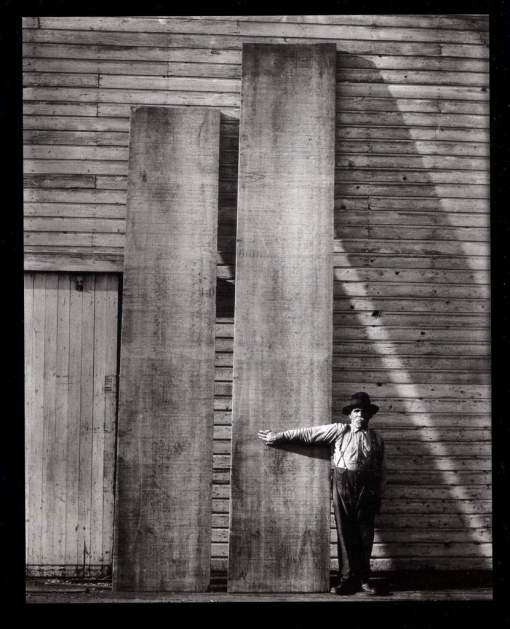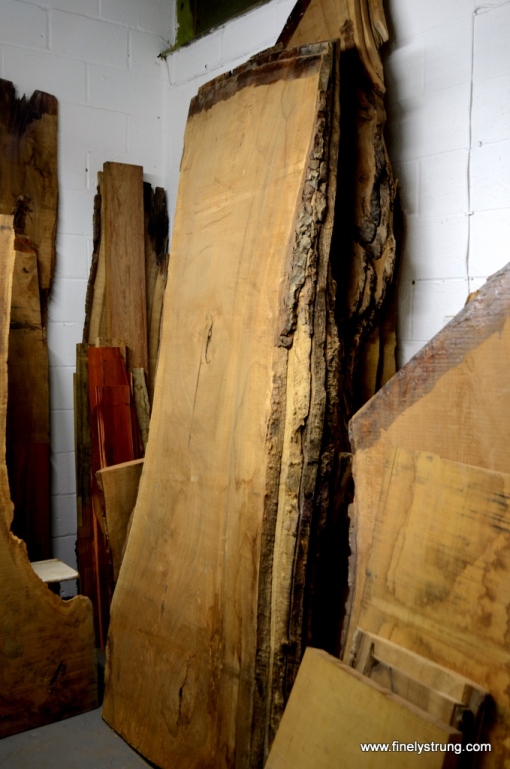This splendid photograph was taken by John Runk¹ in Stillwater, Minnesota on an 8 x 10 plate camera in 1912. I came across it in a book, The Photographer’s Eye written by John Szarkowski. Unless the chap in the hat is unusually short, these pine boards must be around 3 feet wide and 15 – 18 feet long. The saw marks run straight across the boards which made me wonder how they had been cut – not with a circular saw obviously. Were large bandsaws in operation at the beginning of the 20th century?
Buying wood a few months ago, I realised that I didn’t know much about modern methods of conversion of timber either. Here are a couple of photographs taken in Andy Fellows’ wood store in Gosport, Hants². He has supplied me with quite a lot of the wood that I’ve used in recent guitars including the Madagascan rosewood for this nylon string guitar and the beautiful walnut for this copy of a 19th century guitar by Panormo. These boards aren’t quite as large as those in Runk’s photograph but they’re still pretty big and I’ve only the vaguest idea of how he goes about transforming them into the book matched guitar sets from which he lets me pick and choose. Next time I visit, I shall try to find out a bit more.
Sometimes, when handing over an completed instrument to its new owner, I catch myself wondering whether they have any idea of the time and trouble that has gone into making it. (Of course, it’s enjoyable time and trouble so I’m not complaining. Even so … ) But I suspect that instrument makers and woodworkers aren’t any better. When we buy wood we’re more likely to whinge about the price than to acknowledge the efforts and skills of the people who selected the log and converted it into sets of conveniently workable dimensions like those below.
1. There’s a brief biography of John Runk here.
2. Andy Fellows also sells wood at his on-line shop, Prime Timbers.




3 Comments
Hi Christopher,
Up and down sawing was established early on with mills located on rivers all through New England and the Upper Midwest. In my area the old timber- framed barns show all the principle members hewn by hand and the smaller stuff for braces, rafters, etc. often vertically sawn. It was too much effort to drag the huge logs to a mill if you weren’t right by a river, but smaller stuff could be trucked in wagons. When the virgin forest of the Wisconsin region was cut much of it was near river or lake.
Check out this place:
http://www.berkproducts.com/.
When I can talk my clients into spending the extra money, it’s where I go. They are now selling tone woods in addition to their incredible inventory of flitches.
Thanks, Tico.
My grandfather had simmilar, water powered, just with one blade. It was destroyed during the WW2…
One Trackback/Pingback
[…] favorite black and white image is Pine board and Frank Stenlund by John […]